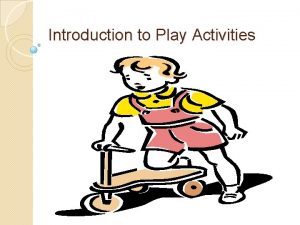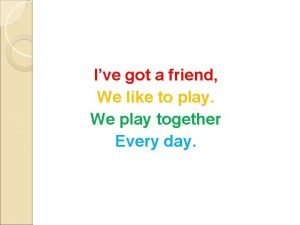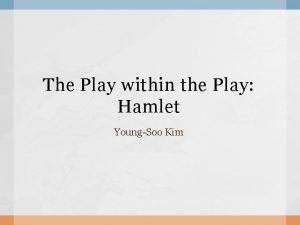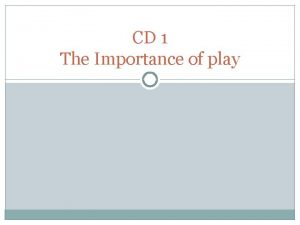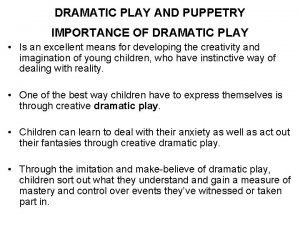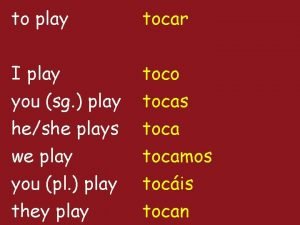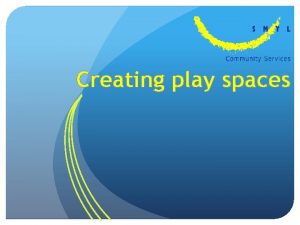PLAY The Importance of Play The Stages of











- Slides: 11

PLAY The Importance of Play The Stages of Play The Types of Play

The Importance of Play Why is play so important for children? 1. Play – Builds self esteem “I can do it” children realize they can make things happen, build a tower, roll a ball, etc. . 2. Play - Encourages creativity – kids use their imagination and build towers, design cities, pretend a block is a truck

3. Play – Helps children learn about different roles – kids pretend to be a mother, father, police officer, fireman, teacher 4. Play –Builds relationships/Social skills – sharing, taking turns, working together, following rules

5. Play – helps children practice new skills – bike, run, jump, learn colors, shapes, (mental and physical skills) 6. Play – teaches children to focus on tasks – kids develop longer attention spans, learn to follow through and finish a task.

Stages of Play Children progress through these stages as they grow & develop 1. Solitary Play – (babies) – mostly side by side, ignoring each other, playing by themselves 2. Onlooker Play – (toddler) – still side by side, watching each other more, not joining together

3. Parallel Play – (toddler) – playing side by side – no real interaction 4. Associative Play – (age 3+) Two or more children play at one activity, sharing toys, not really organized.

5. Cooperative Play (ages 5 -10) – children playing together on more organized tasks, more role playing, building roads – bridges, games, team type play.

Types of Play 1. Manipulative Play – small muscles – beads, lacing cards, puzzles 2. Large Muscle Play – climb, jump, swing, pedal, skip

3. Art Play – colors, paints, play dough, textures – 4. Water and Sand Play Explore, imagination, shake, stir, measure, pour

5. Block Building – building and knocking down towers. 6. House Keeping – acting out home life experiences, imitate different roles, play cooking, caring for baby dolls.

7. Dramatic Play – acting out stories, dressing up 8. Table Games – learning to take turns, learning colors, counting, playing fairly, following rules
